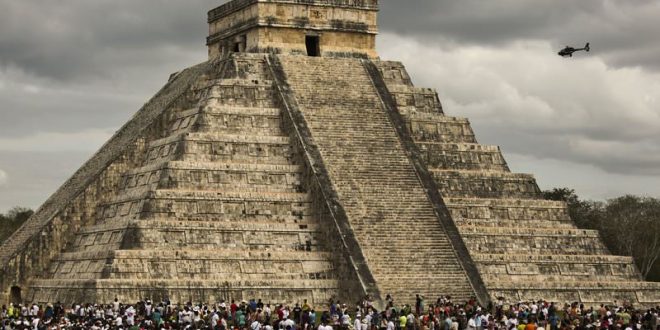Researchers have discovered a third structure within Kukulkan pyramid at the Mayan ruins of Chichen Itza. The 33-feet structure is encapsulated under other two structures on the famous archeological site and suggests that the pyramid was built like a “Russian nesting doll,” in which decreased size objects are placed inside one another.
A 10m tall pyramid was found within another 20m structure, which itself is enveloped by the 30m pyramid visible at the Mayan archaeological complex known as Chichen Itza in Yucatan state.
The smallest pyramid was built between the years 550 and 800, engineers and anthropologists said.
The middle structure had already been discovered in the 1930s and dates back to the years 800-1,000, while the largest one was finished between 1050-1300.
The discovery suggests that the pyramid, known as “El Castillo” (The Castle), was built in three phases.
“It’s like a Russian nesting doll. Under the large one we get another and another,” Rene Chavez Seguro, the project’s chief and a geophysics researcher at the National Autonomous University of Mexico, told a news conference.
Structures were built on top of each other for various reasons, including deterioration or the arrival of new leadership, said Denisse Argote, expert at the National Anthropology and History Institute.
The smallest pyramid was spotted using a non-invasive technique that consists of lighting the inside of the pyramid to see its interior without causing damage.
The discovery could shed light on the original Mayan culture before it was influenced by populations from central Mexico, Mr Argote said.
Last year, archaeologists discovered that the Kukulkan pyramid was built atop a cenote, or underground river, which are common in the region and are sacred to the Maya.
Agencies/Canadajournal
 Canada Journal – News of the World Articles and videos to bring you the biggest Canadian news stories from across the country every day
Canada Journal – News of the World Articles and videos to bring you the biggest Canadian news stories from across the country every day



